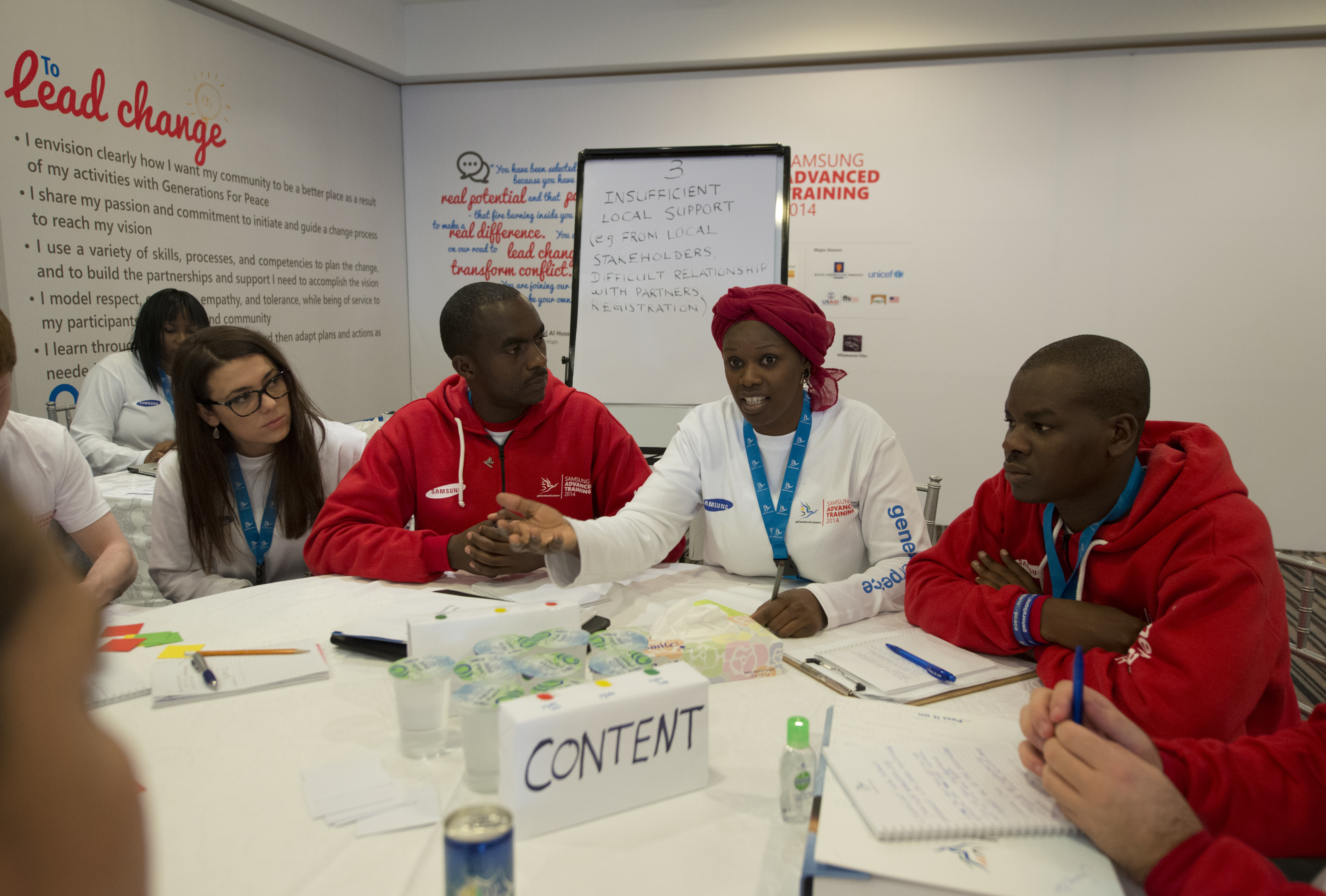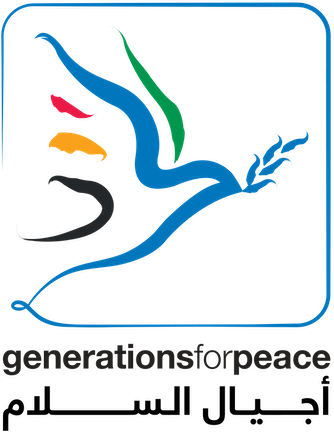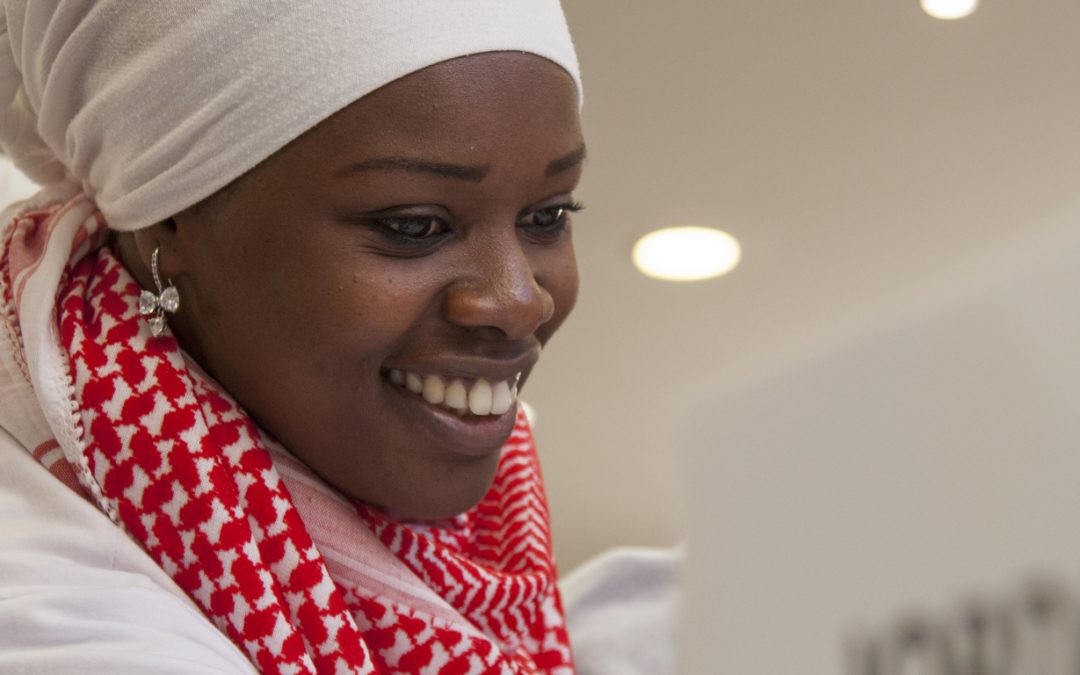By Hana Jumah, Generations For Peace volunteer and facilitator
Have you noticed that people celebrate, eat, show their emotions and learn differently? This is all very normal and can be attributed to their age, educational backgrounds, learning styles, traditions and cultural norms.
My journey as a volunteer facilitator with Generations For Peace (GFP) started four years ago. I believed that practicing facilitation, and passing on the knowledge and skills gained throughout my volunteering journey, could help lead positive change and transform conflict in communities that suffer from destructive violence.
Facilitation
Facilitation is one of the key skills all GFP volunteers learn and practice throughout programme implementation in their local communities. In addition to the learning outcomes of each training, the way I personally prepare is dependent on the learning needs of the participants as well as the side of a conflict they represent. Training participants from different sides of a conflict is definitely challenging, however as programme volunteers, we understand the importance of ensuring inclusion from all sides.
Over the last four years, I have facilitated trainings for participants from different religions, nationalities and cultures – these have been some of the most testing training environments I have ever faced. I have also educated myself on advanced facilitation methodologies, intercultural skills and intercultural communications, and have had the opportunity to put these into practice many times during various trainings across the Middle East and internationally.
I enjoy being around people and feeling the positive energy this creates – it is one of the many reasons why I love to facilitate and work with multi-cultural groups. It is really difficult for me to pick my most memorable experience – there are many – however, one of my highlights was being part of the facilitation team during the GFP Amman Camp 2013. This camp included youth from eight countries in the Middle East and North Africa.
It was so intriguing to see and experience the differences among a group of people who spoke the same language, yet had a significant number of dialects of the same language. In some instances, it was extremely funny when the same word in Arabic meant different things in different countries and we had to clarify this, so it was no surprise that we had already decided beforehand that the training should be held in English! This demonstrates that even though people may share the same language, their cultures can still differ hugely.
Most facilitation challenges I have faced occurred when working with a culturally diverse group of participants. Sometimes participants present a higher risk of tension or negative interactions due to a lack of cultural sensitivity. This can be for a number of reasons, such as their norms for social interactions, time management standards and communications styles. For example, some trainees come from a culture that might be more relaxed about timing, or perhaps some are more forthcoming when communicating their needs and interests compared to others.
My role as a facilitator is to create the safest learning environment possible to ensure quality participation and positive interactions between participants, by using diverse facilitation techniques and methodologies. I think the most important work needs to happen during the preparation phase before the training commences, which includes learning about the points mentioned above.
The following model clearly shows why it is important to be aware of people’s cultures before meeting them – it is referred to as the ‘iceberg’:

Image: Universität Hildesheim, 2013
As you will observe, only one ninth of the iceberg’s volume is above water – the rest remains beneath the surface of the sea. Applying the iceberg model, we can see and recognise 10% of people’s cultures through their different practices and behaviours, however the other 90% is hidden. In fact, we can only learn more through longer periods of interactions. So for a facilitator who might spend a limited amount of time with a group of trainees, the following tips are very simple techniques to help manage groups and achieve the desired learning outcomes.
Before the training:
. Review the participants’ applications to learn more about them and familiarise yourself with their backgrounds.
. Conduct research about their culture, area, nationality or ethnic group and cultural norms.
. Review stereotypes participants might hold towards each other by searching online.
During the training:
. Set and agree on detailed ground rules with the participants on the first day to ensure they have chosen the rules themselves – these will be the cultural norms everyone follows despite their personal backgrounds. With that said, participants might have different levels of cultural awareness which can put more pressure on the facilitator to further clarify the norms during the training. For example, trainees always request ‘respect’ as one of the ground rules in each training, however I am aware that people define respect differently. My approach is to ask them how they would like to be respected throughout the training. Together as a group, we then develop a list of norms and ground rules that all trainees agree on to avoid any misunderstandings that might otherwise arise.
. Appreciate the cultural diversity by providing opportunities for the participants to voice their hopes and fears, as well as discussing the advantages of having a diverse group of people at the start of the training.
. Design team building games that focus on similarities, but also on the value of differences. This facilitates the bonding experience for trainees across their cultural divides.
. Divide and mix groups by applying different approaches during trainings – this is key. For example, when the content of the session does not require specific groups, I use this as an opportunity to mix the participants. Also, when mixing adult groups, I prefer to give the participants a choice where they sit, however I do outline some conditions, such as no more than two people from the same community can sit together.
. Use your observation skills to see how people interact and react, so you can recognise their norms. This will help you figure out whether or not they are comfortable with the diversity in the room, and what their expectations of others are.
. Match your body language with verbal communication to avoid confusing trainees and to ensure that your body language is consistent with what you are saying.
. Apply adult learning principles which leverage on the experience and maturity of adult learners. These are principles that build on their capacity to share, exchange and learn from others.
. Focus more on small group work rather than larger group discussions.

GFP Samsung Advanced Training, hosted in Jordan – it brought together 33 experienced volunteers from 21 different GFP programmes in 11 countries
Volunteers begin their personal journeys to lead change in their communities by applying what they have learnt at the training, with an overall goal to learn to live together, and be open-minded and adaptable. It is important that volunteers from around the world learn how to go through this experience together despite the differences between them, using those same differences to their advantage from the very start. I believe that being a GFP volunteer is a life learning experience.
Facilitation is an art form that GFP volunteers use to effectively create positive change and promote peace, and I am very excited to join the facilitation team at the next Advanced Training in October. I see it as an opportunity to add to my ongoing experience of facilitating groups from different cultures – I cannot wait!
_______
Sign up to our e-newsletter to learn more about the impact of our programmes in the Middle East, Africa, Asia and Europe.




Reblogged this on abdielkude.